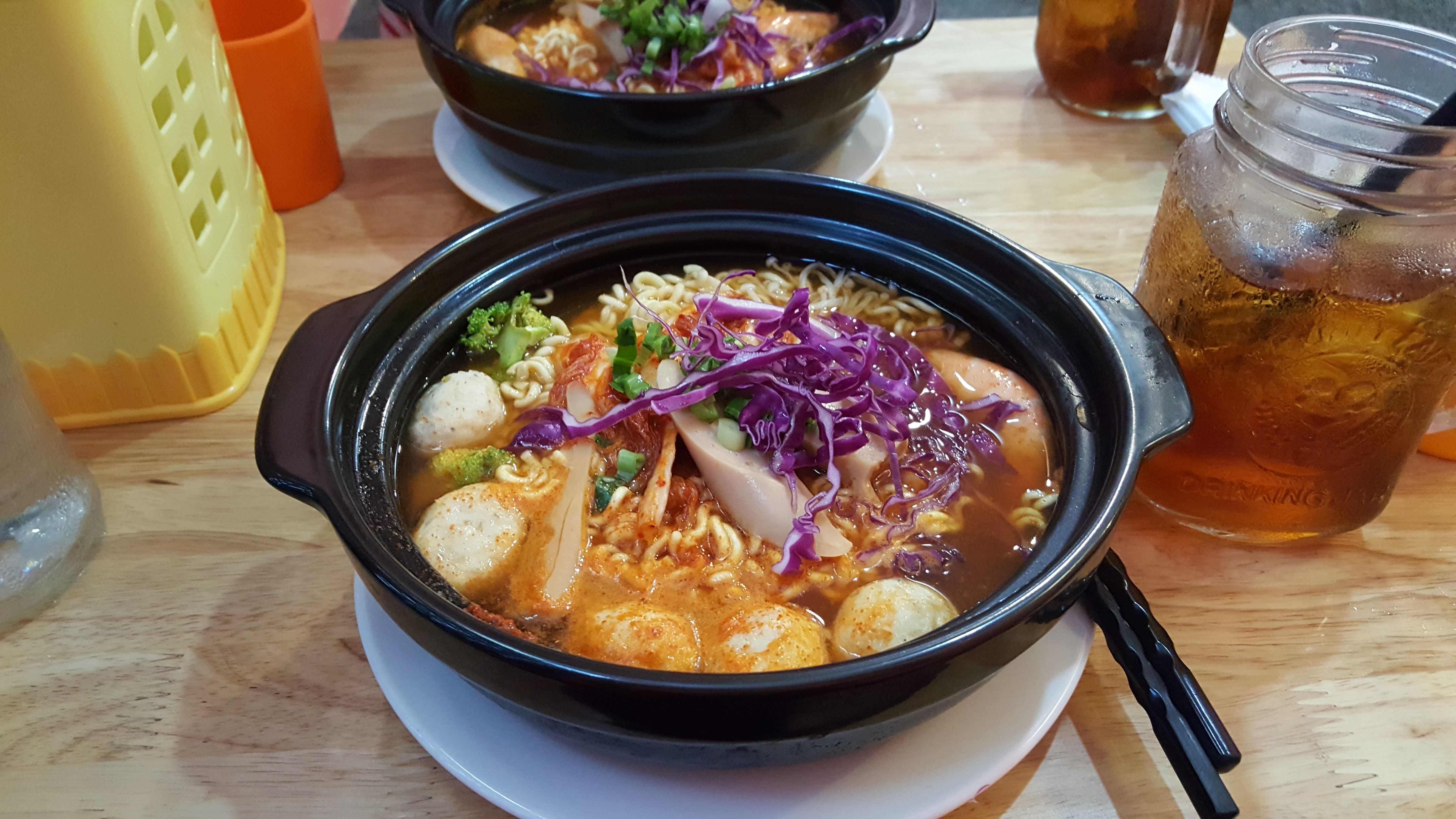Asian people are famous for spicy foods, and young Vietnamese diners have recently added a kind of 7-level spicy noodle to their list of favorite dishes in Ho Chi Minh City.
The dish, called ‘mì cay’ in Vietnamese, has been the recipient of much praise from Vietnamese diners, especially young foodies flooding local food stands nightly with requests for the new dish.
When the dish first made its appearance in the city, people seemed to immediately flock to local restaurants, braving long lines for a bowl of the noodles.
The popularity of the dish grew so high that soon photos and videos capturing diners and friends having the dish began to appear all over social networks.
Seven shades of noodle
Originating in South Korea, a bowl of ‘mì cay’ costs around VND40,000 (US$2) and consists of spicy and sour noodles usually topped with beef, Korean kimchi, seafood, or a host of other toppings.
'Mì cay' is typically served alongside vegetables and a bottle of cold water to save diners’ tongues from the spice.
A giveaway from its name, the obvious characteristic is its spice. But simply just making a dish spicy is not the only thing behind 'mì cay’s success.
In fact, part of the dish’s popularity is that diners have the option to choose the level of spiciness.
When ordering, diners can choose the spicy level in their bowl on a scale from zero to seven.
For people worried about the spicy taste, the lowest level, zero, is recommended.

A bowl of spicy noodle at level 1. Photo: Dong Nguyen/Tuoi Tre News
According to Tran Cao Hieu, owner of Naga Restaurant, the 7-level spicy noodles that Vietnamese young diners are falling for are inspired by Jjamppong, a Korean spicy seafood noodle soup.
Hieu, who calls himself a pioneer of the Vietnamese version of the dish in Ho Chi Minh City, says that he has had to transform the dish to fit the Vietnamese taste.
According to the spicy level customers demand, restaurants will add different amounts of fresh chili juice to the 'mì cay' bowl.
Ordering a bowl of 'mì cay' can even turn into a game, with diners often challenging one other to see who can conquer the highest level.
Some restaurants even offer an award to those who can finish the bowl of noodle at level seven, but even daredevil diners have trouble handling the spice.
The Naga owner said that when he opened the restaurant, around 80 people ordered level seven but only a tenth of them finished their bowls.
He said customers who try the dish for the first time are often advised by his staff not to choose a level that is too high.
According to Hieu, the dish’s attraction comes from its unique and challenging level of spice combined with its deliciousness.
“I learned of this dish from the news and the restaurant is near my house so I came to give it a try. I tried level one and it was so spicy,” a diner commented. “I think it’s attractive to many diners because it’s new, but diners shouldn’t dare each other to eat at too high level because it could cause stomachache.”

Diners enjoy spicy noodles at a restaurant in Go Vap District, Ho Chi Minh City. Photo: Dong Nguyen/Tuoi Tre News
How long does a ‘trend’ last?
‘Mì cay’ is not the first dish that has become a sensation amongst local young diners, as other foods and snacks have made a name for themselves as food trends popular with Vietnamese youngsters.
Besides Taiwanese milk tea, a drink which has become an iconic beverage for generations of Vietnamese students, other food fads have also become the favorite of young eaters.
Recent food fads include ‘trà chanh’ (lemon tea) which formed a trend of ‘trà chanh chém gió’ (lemon tea and chitchatting) four years ago, ‘chè khúc bạch’ (sweet soup with jelly being the main ingredient) which could be seen at almost all corners in the city, and ‘xoài lắc’ (mago shaken with shrimp salt), which has dominated the market of street food in recent times.

More than 3,200 posts are found featuring the hashtag 'xoailac' on Instagram.
Like ‘mì cay,’ these foods have caused big stirs in young dining circles, especially after their first appearances were over-advertised by local cuisine guru sites.
However, with the exception of milk tea, many of these food fads have quickly faded away.
Thus the question “how long will the spicy noodle ‘fever’ last?” is still asked by many.

A bowl of ‘chè khúc bạch' topped with a variety of fruits at an eatery in Ho Chi Minh City. The dish fad has faded away after causing a stir among young diners in the city. Photo: Son Luong/Tuoi Tre News
Though it seems excitement over the trend has calmed down since its original appearance, Hieu appears to think it will go on for a while – highlighted by his plans to open more outlets in the southern city and even other cities like Hanoi and Da Nang to sell the dish.
The restaurateur expressed his confidence that ‘mì cay’ will not fade away like other trendy foods, arguing that the dish is delicious as a main course, proven by 60 percent of his customers returning for a spicy bowl.
Some have the dish three to four times a week, he added.
Like us on Facebook or follow us on Twitter to get the latest news about Vietnam!



















































